Culture
Festivals
Culturally, Edinburgh is best known for the Edinburgh Festival, which is a series of separate events running from the end of July until early September each year. The longest established festival is the Edinburgh International Festival, which first ran in 1947. The International Festival centres on a programme of high-profile theatre productions and classical music performances, featuring international directors, conductors, theatre companies and orchestras.
The International Festival has since been taken over in both size and popularity by the Edinburgh Fringe. What began as a programme of marginal acts has become the largest arts festival in the world, with 1867 different shows being staged in 2006, in 261 venues. Comedy is now one of the mainstays of the Fringe, with numerous notable comedians getting their 'break' here, often through receipt of the Perrier Award.
In 2008 the largest comedy venues on the Edinburgh Fringe launched as a festival within a festival, labelled the Edinburgh Comedy Festival. Already at its inception it was the largest comedy festival in the world.[57] Alongside these major festivals, there is also the Edinburgh Art Festival, Edinburgh International Film Festival (moved to June from 2008), the Edinburgh Jazz and Blues Festival, and the Edinburgh International Book Festival. The Edge Festival (formerly known as T on the Fringe), a popular music offshoot of the Fringe, began in 2000, replacing the smaller Flux and Planet Pop series of shows.
Running concurrently with the summer festivals, the Edinburgh Military Tattoo occupies the Castle Esplanade every night, with massedpipers and fireworks.
The Edinburgh International Science Festival is held annually in April and is one of the most popular science festivals in the world.
[edit]Celebrations
Equally famous is the annual Hogmanay celebration. Originally a street party held on Princes Street and the Royal Mile, the Hogmanay event has been officially organised since 1993. In 1996, over 300,000 people attended, leading to ticketing of the main street party in later years, with a limit of 100,000 tickets. Hogmanay now covers four days of processions, concerts and fireworks, with the street party commencing on Hogmanay. During the street party Princes Street is accessible by ticket only, with live bands playing, food and drink stalls, and a clear view of the castle and fireworks. Alternative tickets are available for entrance into the Princes Street Gardens concert and Ceilidh, where well known artists perform and ticket holders are invited to participate in traditional Scottish Ceilidh dancing. The event attracts thousands of people from all over the world.
On the night of 30 April, the Beltane Fire Festival takes place on Edinburgh's Calton Hill. The festival involves a procession followed by the re-enactment of scenes inspired by pagan spring fertility celebrations. At the beginning of October each year, the Dussehra Hindu Festival is also held on Calton Hill.[58]
[edit]Museums and libraries
Edinburgh is home to a large number of museums and libraries, many of which are national institutions. These include the Museum of Scotland, the Royal Museum, the National Library of Scotland, National War Museum of Scotland, the Museum of Edinburgh, Museum of Childhoodand the Royal Society of Edinburgh.
[edit]Literature and philosophy
Edinburgh has a long literary tradition, going back to the Scottish Enlightenment. Edinburgh's Enlightenment produced philosopher David Hume and the pioneer of political economy, Adam Smith. Writers such as James Boswell, Robert Louis Stevenson, Sir Arthur Conan Doyle, and SirWalter Scott all lived and worked in Edinburgh. J K Rowling, author of the Harry Potter novels, is a resident of Edinburgh. Edinburgh has also become associated with the crime novels of Ian Rankin, and the work of Irvine Welsh, whose novels are mostly set in the city and are often written in colloquial Scots. Edinburgh is also home to Alexander McCall Smith. Edinburgh has been declared the first UNESCO City of Literature.
[edit]Music, theatre and film
Outside festival season, Edinburgh continues to support a number of theatres and production companies. The Royal Lyceum Theatre has its own company, while the King's Theatre, Edinburgh Festival Theatre, and Edinburgh Playhouse stage large touring shows. The Traverse Theatrepresents a more contemporary programme of plays. Amateur theatre companies productions are staged at the Bedlam Theatre, Church Hill Theatre, and the King's Theatre amongst others. Youth Music Theatre: UK has a regional office in the city.
The Usher Hall is Edinburgh's premier venue for classical music, as well as the occasional prestige popular music gig. Other halls staging music and theatre include The Hub, the Assembly Rooms and the Queen's Hall. The Scottish Chamber Orchestra is based in Edinburgh.
Edinburgh has two repertory cinemas, the Edinburgh Filmhouse, and the Cameo, and the independent Dominion Cinema, as well as the usual range of multiplexes.
Edinburgh has a healthy popular music scene. Occasional large gigs are staged at Murrayfield and Meadowbank, with mid-sized events at venues such as the Corn Exchange, HMV Picture House, the Liquid Room, and the Bongo Club. Smaller more intimate shows can be found at venues like The GRV, Cabaret Voltaire, The Voodoo Rooms, The Roxy Art House, Bannerman's, Henry's Cellar Bar, and Sneaky Pete's. Recent successes in the Edinburgh scene can be attributed to the rise of artists such as Steve Mason and Steve Adey.
In 2010, PRS for Music listed Edinburgh amongst the UK's top ten 'most musical' cities.[59]
Edinburgh is also home to a flourishing group of contemporary composers such as Nigel Osborne, Peter Nelson, Lyell Cresswell, Hafliði Hallgrímsson, Edward Harper, Robert Crawford, Robert Dow, and John McLeod[60] whose music is heard regularly on BBC Radio 3 and throughout the UK.
[edit]Visual arts
Edinburgh is home to Scotland's five National Galleries as well as numerous smaller galleries. The national collection is housed in the National Gallery of Scotland, located on the Mound, and now linked to the Royal Scottish Academy, which holds regular major exhibitions of painting. The contemporary collections are shown in the Scottish National Gallery of Modern Art, and the nearbyDean Gallery. The Scottish National Portrait Gallery focuses on portraits and photography.
The council-owned City Art Centre shows regular art exhibitions. Across the road, The Fruitmarket Gallery offers world class exhibitions of contemporary art, featuring work by British and international artists with both emerging and established international reputations.
There are world class private galleries, including: Doggerfisher and Ingleby Gallery, the latter serving up a constantly challenging exhibition program of museum quality work; including shows by Callum Innes, Peter Liversidge, Ellsworth Kelly, Richard Forster, and Sean Scully.
The city hosts several of Scotland's galleries and organisations dedicated to contemporary visual art. Significant strands of this infrastructure include: The Scottish Arts Council, Inverleith House, Edinburgh College of Art, Talbot Rice Gallery (University of Edinburgh), The Travelling Gallery, Edinburgh Printmakers, WASPS, Artlink, Edinburgh Sculpture Workshop, Stills, Collective Gallery, Out of the Blue, The Embassy, Magnifitat, Sleeper, Total Kunst, OneZero, Standby, Portfolio Magazine, MAP magazine, Edinburgh's One O'Clock Gun Periodical and Product magazine and the Edinburgh Annuale.
[edit]Nightlife and shopping
Edinburgh has a large number of pubs, clubs and restaurants. The traditional areas were the Grassmarket, Lothian Road and surrounding streets, Rose Street and its surrounds and the Bridges. In recent years George Street in the New Town has grown in prominence, with a large number of new, upmarket public houses and nightclubs opening, along with a number on the parallel Queen Street. Stockbridge and the waterfront at Leith are also increasingly fashionable areas, with a number of pubs, clubs and restaurants.
The largest nightclubs are Lava & Ignite (formerly Cavendish) and City Nightclub, as well as the University of Edinburgh's student union, Potterrow. Smaller commercial venues include Base, Faith, Stereo, and Karma. In recent years night clubs on George Street such as Opal Lounge, Lulu's, Why Not and Shanghai have become popular.
The main alternative, indie and rock nights are hosted at The Hive, Opium and Studio 24. The Liquid Room re-opened on 4 August 2010 after undergoing a full re-fit, after being damaged by the fire that destroyed an Indian restaurant which was situated behind it in December 2008.
The underground nightclub scene playing music such as techno, house, electronica, drum & bass and dubstep has suffered in recent years with the closure of Wilkie House, The Honeycomb, The Venue, La Belle Angele (destroyed in the Cowgate fire) and Luna (formerly eGo). The GRV, Cabaret Voltaire, The Bongo Club, and Sneaky Pete's now host the majority of underground events held in Edinburgh.
There are two dedicated gay clubs in Edinburgh, CC Blooms and GHQ; several other club venues have LGBT nights.
A fortnightly publication, The List, is dedicated to life in Edinburgh and around, and contains listings of all nightclubs, as well as music, theatrical and other events. The List also regularly produces specialist guides such as its Food and Drink guide and its guide to the Edinburgh Festivals. Free Monthly newspaper The Skinny (magazine) also provides listing and cultural reviews.
Princes Street is the main shopping area in the city centre, with a wide range of stores from souvenir shops, from chains such as Boots and H&M and institutions like Jenners. George Street, north of Princes Street, is home to a number of upmarket chains and independent stores. The St. James Centre, at the eastern end of George Street and Princes Street, hosts a substantial number of national chains including a large John Lewis. Multrees Walk, adjacent to the St. James Centre, is a recent addition to the city centre, hosting brands such as Louis Vuitton, Emporio Armani, Mulberry and Calvin Klein, with Harvey Nichols anchoring the development.
Edinburgh also has substantial retail developments outside the city centre. These include The Gyle and Hermiston Gait in the west of the city, Cameron Toll, Straiton Retail Park and Fort Kinnaird in the south and east, and Ocean Terminal to the north, on the Leith waterfront. TheRoyal Yacht Britannia lies in dock here next to the centre.
[edit]Edinburgh Zoo
Edinburgh Zoo is a non-profit zoological park located in Corstorphine. The land lies on Corstorphine Hill and provides extensive views of the city. Built in 1913, and owned by the Royal Zoological Society of Scotland, it receives over 600,000 visitors a year, which makes it Scotland's second most popular paid-for tourist attraction, after Edinburgh Castle.[61] As well as catering to tourists and locals, the zoo is involved in many scientific pursuits, such as captive breeding of endangered animals, researching into animal behaviour, and active participation in various conservation programs around the world.[62] The zoo is the only one in Britain to house polar bears and koalas, as well as being the first zoo in the world to house and breed penguins.
[edit]Sport
[edit]Football
Edinburgh has two professional football clubs - Heart of Midlothian and Hibernian. They are known locally as Hearts and Hibs and both teams currently play in the Scottish Premier League. Hearts play at Tynecastle Stadium in Gorgie, while Hibs play at Easter Road Stadium, which straddles the former boundary between Edinburgh and Leith.
Edinburgh was also home to senior sides St Bernard's, and Leith Athletic. Most recently, Meadowbank Thistle played at Meadowbank Stadium until 1995, when the club moved toLivingston, becoming Livingston F.C.. Previously, Meadowbank Thistle had been named Ferranti Thisle. The Scottish national team has occasionally played at Easter Road and Tynecastle.
Non-league sides include Spartans and Edinburgh City, who play in the East of Scotland League along withCivil Service Strollers F.C., Lothian Thistle F.C.,Edinburgh University A.F.C., Edinburgh Athletic F.C., Tynecastle F.C., Craigroyston F.C. andHeriot-Watt University F.C.. Edinburgh United F.C. plays in the Scottish Junior Football Association, East Region.
[edit]Rugby union
The Scotland national rugby union team plays at Murrayfield Stadium, which is owned by the Scottish Rugby Union and is also used as a venue for other events, including music concerts. Edinburgh's professional rugby team, Edinburgh Rugby, play in the Celtic Magners League at Murrayfield. It is the largest capacity stadium in Scotland. Raeburn Place held the first rugby international game between Scotland and England. Edinburgh is also home to numerous smaller rugby teams including Boroughmuir, Edinburgh Academicals and Currie.
[edit]Ice hockey
The Edinburgh Capitals are the latest of a succession of ice hockey clubs to represent the Scottish capital. Previously Edinburgh was represented by the Murrayfield Racers and the Edinburgh Racers. The club play their home games at the Murrayfield Ice Rink and compete in the ten team professional Elite Ice Hockey League along with two other Scottish teams which are the Braehead Clan and the Dundee Stars.
[edit]Other sports
The Scottish cricket team, who represent Scotland at cricket internationally and in the Friends Provident Trophy, play their home matches atThe Grange.
The Edinburgh Diamond Devils is a baseball club claiming its first Scottish Championship in 1991 as the "Reivers." 1992 saw the team repeat as national champions, becoming the first team to do so in league history and saw the start of the club's first youth team, the Blue Jays. The name of the club was changed in 1999.
Edinburgh has also hosted various national and international sports events including the World Student Games, the 1970 British Commonwealth Games, the 1986 Commonwealth Games and the inaugural 2000 Commonwealth Youth Games. For the Games in 1970 the city built majorOlympic standard venues and facilities including the Royal Commonwealth Pool and theMeadowbank Stadium.
In American football, the Scottish Claymores played WLAF/NFL Europe games at Murrayfield, including their World Bowl 96 victory. From 1995 to 1997 they played all their games there, from 1998 to 2000 they split their home matches between Murrayfield and Glasgow's Hampden Park, then moved to Glasgow full-time, with one final Murrayfield appearance in 2002. The city's most successful non-professional team are the Edinburgh Wolves who currently play at Meadowbank Stadium.
The Edinburgh Marathon has been held in the city since 2003 with more than 13,000 taking part annually. The city also has a half-marathon, as well as a number of 10 km and 5 km races, including a 5 km race on the first of January each year.
Edinburgh has a speedway team, the Edinburgh Monarchs, which is currently based at the Lothian Arena in Armadale, West Lothian. Speedway was staged at four venues in the City. Marine Gardens operated 1928 - 1931 and 1938 - 1939. Old Meadowbank operated 1948 - 1954 and 1960 - 1967. Powderhall operated 1977 - 1995. A training track at the Gyle operated 1968.
Edinburgh Eagles are a rugby league team who play in the Rugby League Conference Scotland Division. Murrayfield Stadium also hosts theMagic Weekend where all Super League matches are played(at Murrayfield) all on the one weekend.
[edit]Economy
Main article: Economy of Edinburgh
Edinburgh is the most competitive large city in the UK according to the Centre for International Competitiveness.[63] Edinburgh also has the highest Gross value added per employee figure of any city in the UK outside London, measuring £50,256 in 2007.[64] A combination of these factors saw Edinburgh named the Best Small City of the future by fDi Magazine for 2010/11.[65] Education and health, finance and business services, retailing and tourism are the largest employers.[66] The economy of Edinburgh is largely based on the services sector — centered around banking, financial services, higher education, and tourism. As of March 2010 unemployment in Edinburgh is comparatively low at 3.6%, and remains consistently below the Scottish average of 4.5%.[67]Banking has been a part of the economic life of Edinburgh for over 300 years, with the establishment of the Bank of Scotland - now part of the Lloyds Banking Group - by an act of the original Parliament of Scotland in 1695. Today, together with the financial services industry, with particular strengths in insurance and investment underpinned by the presence of Edinburgh based firms such as Scottish Widows andStandard Life, Edinburgh is the UK's second financial centre after London and Europe's fourth by equity assets.[68] In world terms, it ranks ahead of Dubai, Amsterdam and Washington in the Global Financial Centres Index.[68] The Royal Bank of Scotland opened its new global headquarters at Gogarburn in the west of the city in October 2005. Edinburgh has recently become home to the headquarters of Tesco Bank[69] and Virgin Money.[70]
Tourism is an important economic mainstay in the city. As a World Heritage Site, tourists come to visit such historical sites as Edinburgh Castle, the Palace of Holyroodhouse and the GeorgianNew Town. This is augmented in August of each year with the presence of the Edinburgh Festivals, which bring in over 4.4 million visitors,[67] and generate in excess of £100m for the Edinburgh economy.[71]
As the centre of Scotland's government, as well as its legal system, the public sector plays a central role in the economy of Edinburgh with many departments of the Scottish Governmentlocated in the city. Other major employers include NHS Scotland and local governmentadministration.
[edit]Governance
Main article: Politics in Edinburgh
Following local government reorganisation in 1996, Edinburgh constitutes one of the 32 Unitary Authorities of Scotland.[72] Today, the City of Edinburgh Council is the administrative body for the local authority and has its powers stipulated by the Local Government etc (Scotland) Act 1994.[73]Like all other unitary and island authorities in Scotland, the council has powers over most matters of local administration such as housing, planning, local transport, parks, economic development and regeneration.[73] The council is composed of 58 elected councillors, returned from 17 multi-member electoral wards in the city.[74] Each ward elects three or four councillors by the single transferable vote system, to produce a form of proportional representation. Following the 2007 Scottish Local Elections the incumbent Labour Party lost majority control of the council, after 23 years, to a Liberal Democrat/SNP coalition.[75]
Since 2007, the council has operated a committee structure, headed by the Lord Provost, who chairs the full council and acts as a figurehead for the city.[76] The Provost, currently George Grubb, also serves as ex officio the Lord Lieutenant of the city.[77] A Leader and Policy & Strategy Committee, appointed by the full council, are responsible for the day-to-day running of the city administration. Jenny Dawe has been the Council Leader since May 2007. Councillors are also appointed to sit on the boards of public bodies such as Lothian and Borders Police and the Forth Estuary Transport Authority.[76]
In terms of national governance, Edinburgh is represented in the Scottish Parliament. For electoral purposes, the city area is divided between six of the nine constituencies in the Lothians electoral region.[78] Each constituency elects one Member of the Scottish Parliament (MSP) by the first past the post system of election, and the region elects seven additional MSPs, to produce a form of proportional representation.[78]
Edinburgh is also represented in the House of Commons by 5 Members of Parliament elected from single member constituencies by the plurality system. One of the local constituencies, Edinburgh South West, is represented by Alistair Darling, the former UK Chancellor of the Exchequer.[79]
[edit]Transport
Main article: Transport in Edinburgh
Edinburgh Airport is Scotland's busiest airport and principal international gateway to the capital, handling just over 9 million passengers in 2009.[80] In anticipation of rising passenger numbers, the airport operator BAA outlined a draft masterplan in 2006 to provide for the expansion of the airfield and terminal building.[81] The possibility of building a second runway to cope with an increased number of aircraft movements has also been mooted.[81]
As an important hub on the East Coast Main Line, Edinburgh Waverley is the primary railway station serving the city. With more than 14 million passengers per year, the station is the second busiest in Scotland behind Glasgow Central.[82] Waverley serves as the terminus for trains arriving from London King's Cross and is the departure point for many rail services within Scotlandoperated by First ScotRail.
To the west of the city centre lies Haymarket railway station which is an important commuter stop. Opened in 2003, Edinburgh Park station serves the adjacent business park located in the west of the city and the nearby Gogarburn headquarters of the Royal Bank of Scotland. The Edinburgh Crossrail connects Edinburgh Park with Haymarket, Waverley and the suburban stations ofBrunstane and Newcraighall in the east of the city.[83] There are also commuter lines to South Gyle and Dalmeny, which serves South Queensferry by the Forth Bridges, and to the south west of the city out to Wester Hailes and Curriehill
Lothian Buses operate the majority of city bus services within the City and to surrounding suburbs, with the majority of routes running via Princes Street. Services further afield operate from theEdinburgh Bus Station off St. Andrew Square. Lothian, as the successor company to the City'sCorporation Trams, also operates all of the City's branded public tour bus services, the night bus network and airport buses.[84] Lothian's Mac Tours subsidiary has one of the largest remaining fleets of ex-London Routemaster buses in the UK, many converted to open top tour buses.[85] In 2007, the average daily ridership of Lothian Buses was over 312,000 - a 6% rise on the previous year.[84]
In order to tackle traffic congestion, Edinburgh is now served by six park and ride sites on the periphery of the city at Sheriffhall, Ingliston, Riccarton, Inverkeithing (in Fife) and Newcraighall. A new facility at Straiton opened in October 2008. A referendum of Edinburgh residents in February 2005 rejected a proposal to introduce congestion charging in the city.
Edinburgh has been without a tram system since 16 November 1956.,[86] Following parliamentary approval in 2007, construction began on a new Edinburgh tram network in early 2008. The first stage of the project was expected to be operational by July 2011[87] but is unlikely to be working before the beginning of 2012.[88] The first phase will see trams running from the airport in the west of the city, through the centre of Edinburgh and down Leith Walk to Ocean Terminal andNewhaven.[89] The next phase of the project will see trams run from Haymarket through Ravelstonand Craigleith to Granton on the waterfront.[89] Future proposals include a line going west from the airport to Ratho and Newbridge, and a line running along the length of the waterfront.[90]
[edit]Education
Main article: List of schools in Edinburgh
There are four universities in Edinburgh with over 100,000 students studying in the city.[91]Established by Royal Charter in 1583, the University of Edinburgh is one of Scotland's ancient universities and is the fourth oldest in the country after St Andrews, Glasgow and Aberdeen.[92]Originally centred around Old College the university expanded to premises on The Mound, the Royal Mile and George Square.[92] Today, the King's Buildings in the south of the city contain most of the schools within the College of Science and Engineering. In 2002, the medical schoolmoved to purpose built accommodation adjacent to the new Edinburgh Royal Infirmary at Little France. The University was voted 20th in the world in the 2009 THES World University Rankings.[93]
In the 1960s Heriot-Watt University and Napier Technical College were established.[92] Heriot-Watt traces its origins to 1821, when a school for technical education of the working classes was opened.[94] Based in Riccarton to the west of the city, Heriot-Watt specialises in the disciplines of engineering, business and mathematics.[95] Napier College was renamed Napier Polytechnic in 1986 and gained university status in 1992.[96] Edinburgh Napier University has campuses in the south and west of the city, including the former Craiglockhart Hydropathic and Merchiston Tower.[96] It is home to the Screen Academy Scotland.
Further education colleges in the city include Jewel and Esk College (incorporating Leith Nautical College founded in 1903), Telford College, opened in 1968, and Stevenson College, opened in 1970. The Scottish Agricultural College also has a campus in south Edinburgh. Awarded university status in January 2007, Queen Margaret University was founded in 1875, as The Edinburgh School of Cookery and Domestic Economy, by Christian Guthrie Wright and Louisa Stevenson.[97]
Other notable institutions include the Royal College of Surgeons of Edinburgh and the Royal College of Physicians of Edinburgh which were established by Royal Charter, in 1506 and 1681 respectively. The Trustees Drawing Academy of Edinburgh was founded in 1760 - an institution that became the Edinburgh College of Art in 1907.[98]
There are 18 nursery, 94 primary and 23 secondary schools in Edinburgh administered by the city council.[99]
In addition, the city is home to a large number of independent, fee-paying schools including Clifton Hall School, George Heriot's School, Fettes College, Merchiston Castle School, George Watson's College, Edinburgh Academy andStewart's Melville College. In 2009, the proportion of pupils in education at independent schools was 24.2%, far above the national average of just over 4% and higher than in any other region of Scotland.[100]
[edit]Hospitals
See also: List of hospitals in Edinburgh
Hospitals in Edinburgh include the Royal Infirmary of Edinburgh, which includes Edinburgh University Medical School, and the Western General Hospital, which includes a large cancer treatment centre and the nurse-led Minor Injuries Clinic. There is one private hospital, Murrayfield Hospital, owned by Spire Healthcare. The Royal Infirmary is the main Accident & Emergency hospital not just for Edinburgh but also Midlothian and East Lothian, and is the headquarters ofNHS Lothian, making it a centric focus for Edinburgh and its hinterland. The Royal Edinburgh Hospital specialises in mental health; it is situated in Morningside. The Royal Hospital for Sick Children is located in Sciennes Road; it is popularly known as the 'Sick Kids'.
[edit]Religious communities
[edit]Christianity
The Church of Scotland claims the largest membership of any religious denomination in Edinburgh. As of 2010, there are 83 congregations in the Church of Scotland's Presbytery of Edinburgh.[101] Its most notable and historic church is St Giles' Cathedral; others includeGreyfriars Kirk, Barclay Church, Canongate Kirk and St Andrew's and St George's Church. In the south east of the city is the 12th century Duddingston Kirk. The Church of Scotland Offices are located in Edinburgh, as is the Assembly Hall and New College on The Mound.
The Roman Catholic Church also has a sizeable presence in the city. Its notable structures include St Mary's Cathedral, the Sacred Heart of Jesus, St Patrick's, St. Columba's, St. Peter's and Star of the Sea. The Roman Catholic community in Edinburgh is part of the Archdiocese of St Andrews and Edinburgh, which is led by Keith Cardinal O'Brien, considered to be the leader of the Roman Catholic Church in Scotland.
The Free Church of Scotland (Reformed and Presbyterian) has congregations on the Royal Mile and Crosscauseway; its offices and training college are located on the Mound.
The Scottish Episcopal Church, part of the Anglican Communion, has a number of churches across the city. Its centre is the late 19th century Gothic style St Mary's Cathedral in the West End's Palmerston Place. The historic former pro-cathedral of the city is Old Saint Paul's, located off the Royal Mile, which was established in 1689 when St Giles' Cathedral and the wider Church of Scotland converted from Episcopal to Presbyterian governance.
In addition, there are a number of independent churches situated throughout the city; these churches tend to have a high percentage of student congregants and include Destiny Church, The Rock Elim Church, Kings Church Edinburgh,Charlotte Chapel, Carrubbers Christian Centre, Morningside Baptist Church and Bellevue Chapel.
Biblical unitarians are represented by a Christadelphian church, established in Edinburgh since 1853.[102]
[edit]Other faiths
Edinburgh Central Mosque - Edinburgh's main mosque and Islamic Centre is located on Potterrow on the city's southside, near Bristo Square. It was opened in the late 1990s and the construction was largely financed by a gift from King Fahd of Saudi Arabia.[103] The first recorded presence of aJewish community in Edinburgh dates back to the late 17th century.[citation needed] Edinburgh's Orthodox synagogue is located in Salisbury Road, which was opened in 1932 and can accommodate a congregation of 2000. A Liberal congregation also meets in the city. There is also a Sikh Gurdwara and Hindu Mandir in the city which are both located in the Leith district. Edinburgh Buddhist Centre, part of the Friends of the Western Buddhist Order, is situated by the Meadows.
[edit]Notable residents
Main article: List of Edinburgh people
Scotland has a rich history in science and engineering, with Edinburgh contributing its fair share of famous names. James Clerk Maxwell, the founder of the modern theory of electromagnetism, was born here and educated at the Edinburgh Academy and University of Edinburgh, as was the engineer and telephone pioneer Alexander Graham Bell.[104] Other names connected to the city include Max Born, physicist andNobel laureate; Charles Darwin, the biologist who discovered natural selection; David Hume, a philosopher, economist and historian; James Hutton, regarded as the "Father of Geology"; John Napier inventor of logarithms;[105] chemist and one of the founders of thermodynamicsJoseph Black; pioneering medical researchers Joseph Lister and James Young Simpson; chemist and discoverer of the element nitrogen,Daniel Rutherford; mathematician and developer of the maclaurin series, Colin Maclaurin and Ian Wilmut, the geneticist involved in the cloning of Dolly the sheep just outside Edinburgh. The stuffed carcass of Dolly the sheep is now on display in the National Museum of Scotland.
The lighthouse engineering family, the Stevenson family was based in Edinburgh.
Famous authors of the city include Sir Arthur Conan Doyle, the creator of Sherlock Holmes, Ian Rankin, author of the Inspector Rebus series of crime thrillers, J. K. Rowling, the author of Harry Potter, who wrote her first book in an Edinburgh coffee shop (Nicolson's Cafe,[106][107] the Elephant House and Black Medicine), Adam Smith, economist, born in Kirkcaldy, and author of The Wealth of Nations, Walter Scott, the author of famous titles such as Rob Roy and Ivanhoe, Robert Louis Stevenson, creator of Treasure Island and the Strange Case of Dr Jekyll and Mr Hyde.
Edinburgh has been home to the actor Sir Sean Connery, famed as the first cinematic James Bond;[108] Ronnie Corbett, a comedian and actor, best known as one of The Two Ronnies;[109] and Dylan Moran, the Irish comedian. Famous city artists include the portrait painters Sir Henry Raeburn, Sir David Wilkie and Allan Ramsay. Historians such as Douglas Johnson and Arthur Marwick had roots here.
The city has produced or been home to musicians that have been extremely successful in modern times, particularly Ian Anderson, frontman of the band Jethro Tull; Wattie Buchan, lead singer and founding member of punk band The Exploited; Shirley Manson, lead singer for the band Garbage; The Proclaimers; the Bay City Rollers; Boards of Canada and Idlewild.
Edinburgh is the hometown of the former Prime Minister of the United Kingdom, Tony Blair, who was born in the city and attended Fettes College;[110] Robin Harper the co-convener of theScottish Green Party; and John Witherspoon, the only clergyman to sign the United States Declaration of Independence, and later president of Princeton University.[111]
On the more sinister side, famous criminals from Edinburgh's history include Deacon Brodie, pillar of society by day and burglar by night, who is said to have influenced Robert Louis Stevenson's story, the Strange Case of Dr Jekyll and Mr Hyde[112] the murderers Burke and Hare[113] who provided fresh corpses for anatomical dissection by the famous surgeon Robert Knox[114] andMajor Weir a notorious warlock.
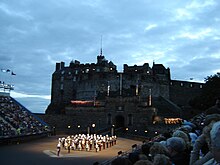

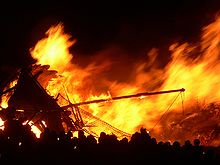

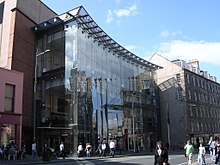








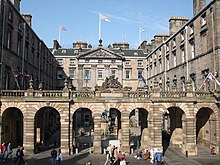

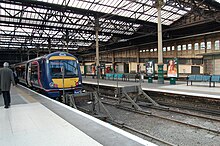




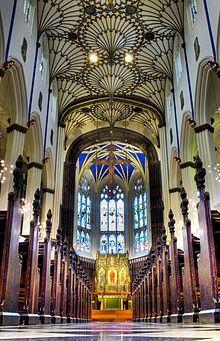


No comments:
Post a Comment